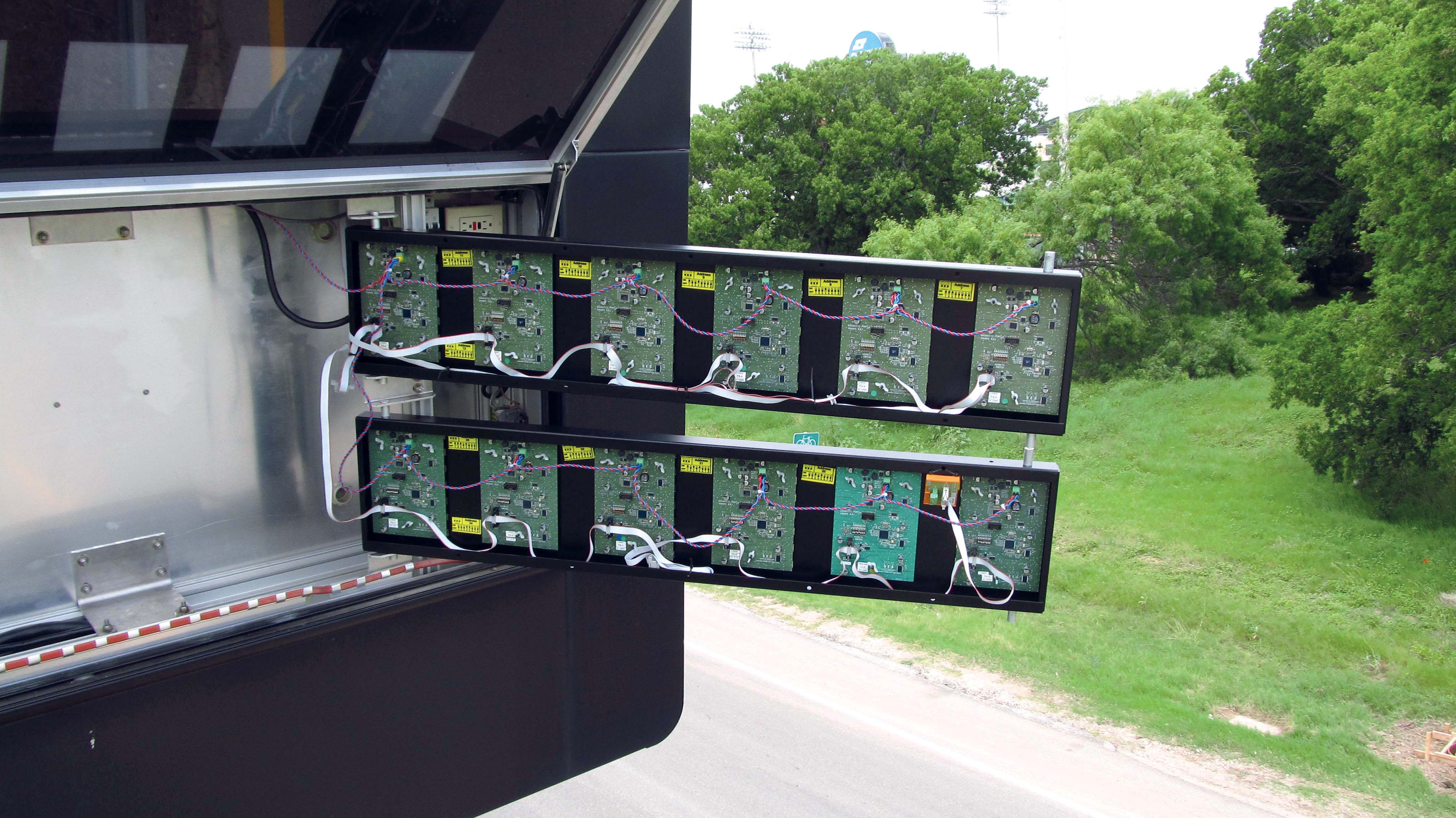
Refurbishing old dynamic message signs can save money and increase technical capabilities as David Crawford discovers.
Evidence is growing on both sides of the Atlantic of the scope for retrofitting old or technically out-of-date dynamic message signs (DMS) with new electronic equipment, to save on the costs of installing full-scale replacements. In the last four months of 2014, a number of US states progressed programmes that achieved savings of more than US$1.75 million (€1.56million).
The US Department of Transportation’s ITS database currently puts the price of a brand-new sign, supplied ready for installation, at up to US$100,000. Infrastructural costs at this level are clearly an issue for state departments of transportation with tight budgets to manage - especially as they note the spread of mobile in-vehicle communications systems designed to fill a similar role, that of giving drivers important travel information.
The argument being advanced in defence of the continued use of the DMS is that, whether fixed or portable, they are location- and message-specific. Their location is carefully chosen to alert drivers to what regional traffic control centres feel is the most important information they should be aware of at that particular point on the network.
The message could be anything from a warning of potentially hazardous weather conditions or the likelihood of regular occurrence congestion up ahead; to give motorists journey-time information; or to reassure them of safe travel through a roadworks construction zone. Furthermore, DMS can play an important societal role - for example in displaying AMBER (America’s Missing: Broadcast Emergency Response) alerts concerning missing children, which have proven to be highly effective.
But DOTs will naturally be looking to make savings wherever possible on the deployment and maintenance of the system. And although budget may be allocated for signage on new roads and grants may be available for new deployments and developments, no additional funding may be available for upgrading or replacing older signs when they begin to wear out. This is where retrofitting becomes attractive and it is not simply restricted to like-for-like change-outs but can include major technical upgrades too.
One US company,
Although still widely in use across the US, signs relying on electromechanical ‘flip-disc’ (dot matrix) messaging technology, with moving parts that inevitably degrade over time, are no longer being supported by manufacturers who have ceased to produce them. Maintenance is therefore becoming increasingly difficult and expensive, with state department of transportation engineers often having to resort to cannibalising or hand-repairing defective parts.
In terms of ongoing highway budget commitments, SES America president Phil Perut calculates that using the most modern LEDs for illumination can offer reduced maintenance costs and energy savings of between 30% and 50%. The savings come largely through eliminating the forced ventilation and continuous internal cooling system needed for the longevity of conventional signs, and the consequent demand on power.
The Virginia Department of Transportation, which has been deploying DMS on its highways since the mid-1980s, is now well through a substantial retrofitting programme. As the first stage in a replacement strategy that initially envisaged new signs, it carried out a full-scale engineering survey of the existing overhead gantries, to check that they could support the installation of additional modern new equipment without incurring any risks of overload or structural instability.
Positive results in this area left the DOT free to concentrate on the options for the signs themselves, at which point its engineers suggested exploring retrofitting. A review of currently-available technical offers led to trials at a pilot site, where the engineers stripped out the existing internal DMS equipment and commissioned SES America to fabricate retrofittable units for the DOT’s existing maintenance contractor to install.
SES America used the existing sign components as blueprints for developing a replacement module, which is fitted with modern fibre-optic electrical and communications cabling and LEDs. It configured the replacement module on its standard product range but with fittings to suit the retained and refurbished cabinet and purpose-made fixing hardware that is compatible with the legacy supporting structure.
The result successfully passed testing by the regional traffic management system’s ITS control centre - with a view, in particular, to withstanding the harsh winter climate prevailing in the north of the state. The programme then continued with the upgrading of signs that had initially been supplied by a number of different vendors.
Offsite engineering of replacement modules minimised the inconvenience to drivers. By end-2011, the DOT had retrofitted some 100 existing signs, saving itself some US$300,000 a year in power and maintenance costs.
All retrofit solutions, like original products, need to comply with the specifications laid down by the US National Transportation Communications for ITS Protocol (NTCIP) family of standards, introduced to ensure the interoperability of electronic traffic control equipment supplied by different manufacturers.
Across the Atlantic in Europe,












